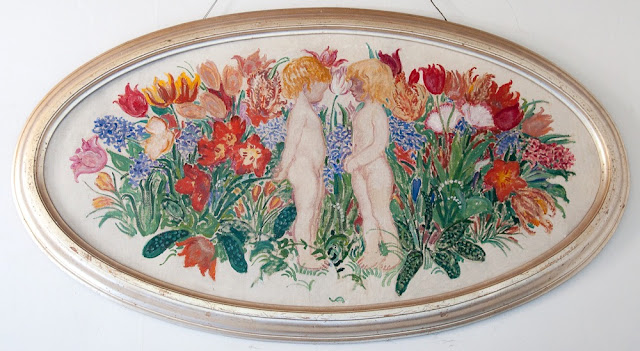The Paradox
The surface has a light sheen to it from the oil colours. The latter were dabbed directly on the base of the canvas, with a white border added for contrast. The colours have been placed in thick, quick strokes which adds a three dimensional effect to the glowing expanse of colour before us.
The flowers are alive and moving in front of us shooting out from the canvas.
Tulips of all colours at the very moment when they are opening their petals to the world and turning over almost in one movement, too heavy to hold up their heads. Tulips are the bearer of the moment in art history. While on the brink of imminent demise, they are as beautiful as anything shall ever be.
Of no less delicacy is the innocence of childhood and no child was more precious to Valdemar Andersen than his own son, Ib Andersen. At this time a teenager and all the more reason for his father to reminisce how even flower heads once seemed to tower over the little children discovering the world on their own for the first time. The little girl is Ib's cousin, Ulla Tafdrup and the children are silently confronting the question of life no one shall ever be able to give them an answer to.
The painting is almost 1,5 metres across. It is as brimming with presence and passion as it is peacefully calm with no need for words.
This is the paradox that is at the heart of Valdemar Andersen's art.


